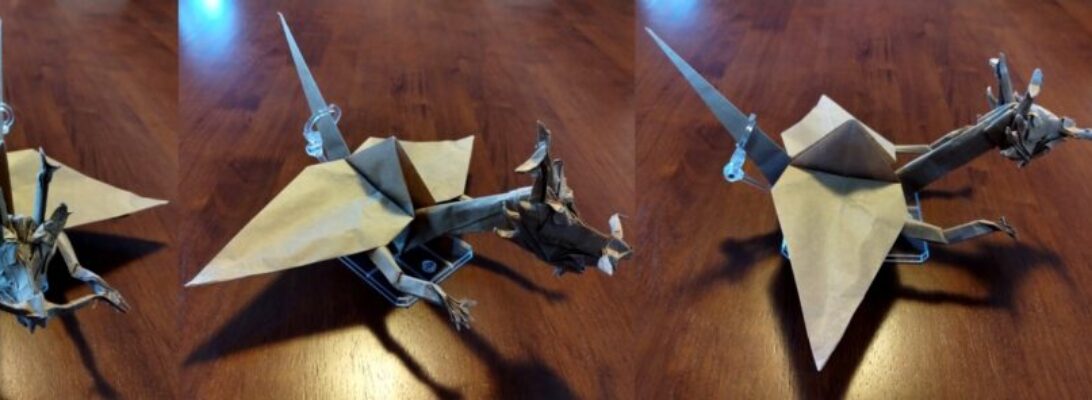Crease patterns, photo sequences and diagrams are the primary way of communicating the complexities and details of an origami model. While I am fairly capable of faithfully following even the most complicated diagram sequence, but still consider myself a newbie at solving CPs:

Sometimes the job is easier – lines are indicated as mountain/valley (red/blue or dashed/dot-dashed lines), other times you only get the major creases of the “base”, from which you then shape and tease the details from.
Origami-Kimiro, a Discord user on OrigamiDan released a CP for a simple domino toppling, and I knew I needed to give it a try:

Using 12″ duo Indigo Tuttle paper, I laid in the creases, oriented them in mountain/valley and marvelled as the paper collapsed into a base that was pretty close to done. Finishing the hand, colour changing to get the coat sleeve, posing and done.
Continue reading


























